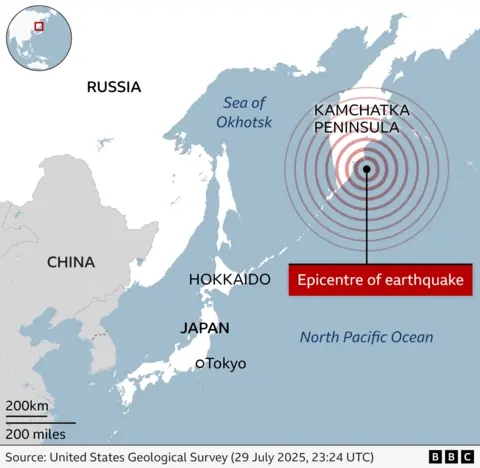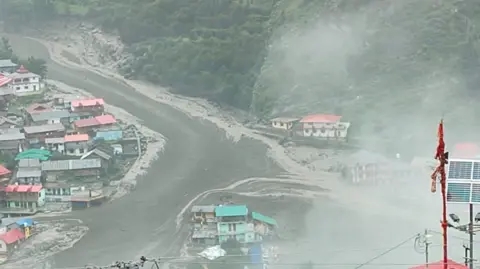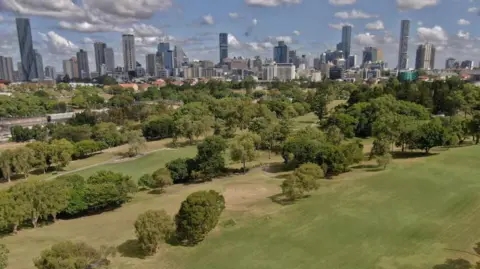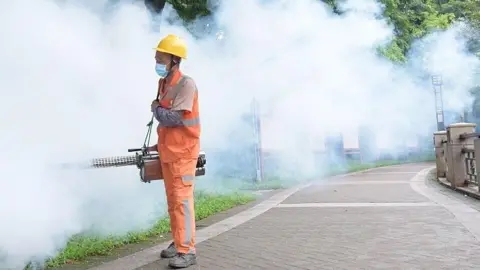A massive 8.8-magnitude earthquake struck near Russia’s Kamchatka Peninsula, triggering tsunami warnings across the Pacific and prompting mass evacuations from Japan to Hawaii. Fortunately, the feared catastrophic waves did not materialize, and alerts were later lifted in most regions.
The quake, one of the strongest recorded in recent decades, sent coastal communities scrambling for higher ground. In Hawaii, waves up to 1.7 meters were reported, though officials confirmed no significant damage. “This wasn’t just a big wave—it could have been deadly,” warned one official before the all-clear was given.
Russia’s Far East saw some of the highest waves, with surges up to five meters hitting Severo-Kurilsk, though no serious injuries were reported. Meanwhile, Japan evacuated millions along its Pacific coast, but only minor flooding occurred. Authorities at the Fukushima nuclear plant, still recovering from the 2011 disaster, reported no issues.
The quake also triggered volcanic activity, with the Klyuchevskoy Volcano erupting shortly afterward. Scientists noted that the region, part of the volatile Pacific Ring of Fire, is prone to such seismic events.
While the immediate danger has passed, officials urge caution as aftershocks continue. The event serves as a stark reminder of the unpredictable power of nature—and the importance of preparedness.









